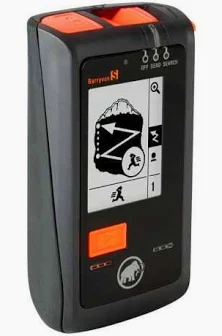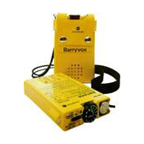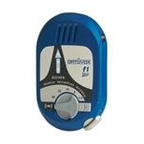Essential Avalanche Safety Gear: Transceivers, Shovels, and Probes
- Alessia Masciocchi
- Mar 7, 2024
- 3 min read
Updated: Jul 1, 2024
As winter enthusiasts, the allure of pristine snow-covered landscapes draws many of us to the mountains. Whether skiing, snowboarding or simply enjoying the wintry scenery, it's crucial to be aware of the potential dangers, particularly avalanches. Avalanches are unpredictable and can be deadly, but with the right equipment and knowledge, you can significantly reduce the risks. In this guide, we'll explore three essential tools for avalanche safety: transceivers, shovels, and probes.

Avalanche Transceivers: Finding the Beacon
Imagine you're exploring the backcountry with friends when suddenly an avalanche strikes, burying one of your companions beneath the snow. This is where avalanche transceivers, also known as beacons, come into play. These small electronic devices emit a signal that other transceivers can pick up, aiding in the search and rescue process. Using a transceiver is relatively straightforward. Before heading out, ensure everyone in your group has a transceiver and knows how to use it. In the event of an avalanche, switch your transceiver to "search" mode and follow the directional arrows displayed on the screen. As you get closer to the buried individual, the signal strength will increase, guiding you to the location. Practice using your transceiver regularly to maintain proficiency and confidence in its operation.
Shovels: Uncovering Hope
Once you've located a buried individual using a transceiver, the next step is digging them out, where a sturdy shovel becomes invaluable. A proper avalanche shovel is lightweight, compact, and durable, making it easy to carry in your backpack while skiing or snowboarding. When digging, work quickly but methodically to clear the snow away from the victim's airway. Start by creating a trench parallel to their body, then dig towards them from the uphill side. Remember to keep the shovel blade flat to avoid accidentally injuring the victim. Every second counts in an avalanche rescue, so having a reliable shovel can make all the difference in saving a life.

Probes: Piercing Through the Snow
Even with the aid of transceivers and shovels, pinpointing the exact location of a buried individual can be challenging, especially in deep snow. That's where avalanche probes come in handy. These long, collapsible poles are designed to penetrate deep into the snowpack, allowing rescuers to locate the victim more accurately. To use a probe, insert it into the snow at regular intervals, probing in a grid pattern across the avalanche debris until you make contact with the victim. Once you've located them, leave the probe in place as a marker for the rescue team while you continue digging.

Tips for Avalanche Safety
Education is Key: Take an avalanche safety course to learn about snowpack assessment, terrain evaluation, and rescue techniques. Understanding avalanche risk factors can help you make informed decisions while in the backcountry.
Practice, Practice, Practice: Familiarize yourself with your avalanche safety gear before heading into the mountains. Regularly practice using your transceiver, shovel, and probe in simulated rescue scenarios to maintain proficiency.
Check the Forecast: Always check the avalanche forecast for your intended area before heading out. Pay attention to current weather conditions, recent snowfall, and avalanche danger ratings to gauge the level of risk.
Travel Wisely: Stick to low-angle terrain whenever possible, especially during periods of heightened avalanche danger. Avoid travelling above or below steep slopes where avalanches are more likely to occur.
Buddy System: Never venture into avalanche terrain alone. Always travel with at least one partner and ensure that everyone in your group has the necessary avalanche safety gear and knows how to use it.
Communicate Effectively: Establish clear communication protocols with your group before setting out. Agree on meeting points, emergency signals, and rescue procedures to ensure a coordinated response in the event of an avalanche.
Stay Alert: Keep a keen eye on your surroundings while in the backcountry. Look for signs of recent avalanche activity, such as cracked or collapsed snow, and be mindful of changing conditions throughout the day.
Know When to Turn Back: Trust your instincts and be willing to adjust your plans if conditions deteriorate or if you encounter unexpected hazards. It's better to err on the side of caution than to risk a potentially life-threatening situation.
By following these tips and equipping yourself with the right gear, you can enjoy the winter wilderness safely and responsibly. Remember, the mountains will always be there – it's up to us to ensure that we return home safely after each adventure.
Conclusion
Avalanche safety is not something to be taken lightly, but with the right equipment and knowledge, you can enjoy the winter wonderland with confidence. Transceivers, shovels, and probes are essential tools that every backcountry adventurer should carry and know how to use effectively. Remember to always check the avalanche forecast before heading out, practice safe travel techniques, and never venture into avalanche terrain alone. Stay safe and enjoy the snow responsibly!




grazie delle info molto pratiche